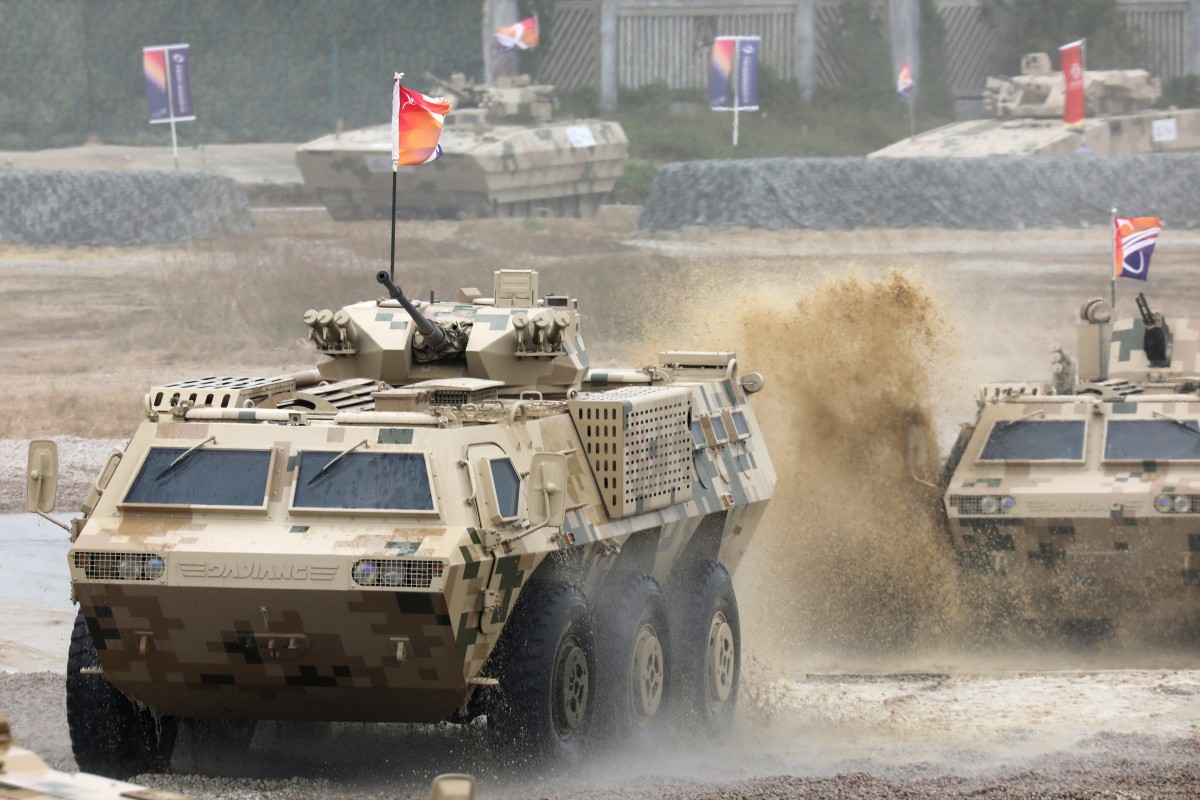Minnie Chan
 China is expected to announce single-digit growth in its defence budget for the coming year – the fourth year in a row of increases in single figures, the spokesman of the country’s top legislative body revealed on Monday.
China is expected to announce single-digit growth in its defence budget for the coming year – the fourth year in a row of increases in single figures, the spokesman of the country’s top legislative body revealed on Monday.
Zhang Yesui, spokesman of the National People’s Congress, did not disclose the total figure, but added that the rise in China’s defence spending had slowed from its previous double-digit growth to a single-digit increase since 2016.
“Whether a country would pose a military threat to other countries depends on the country’s foreign and defence policies, rather than how much it will increase its defence spending,” Zhang said.
“In 2018, China spent about 1.3 per cent of its gross domestic product on defence, while the proportion of GDP of many other key developed countries’ defence expenditure was more than 2 per cent.
“China always sticks to the path of peaceful development and implements a defensive defence policy. China’s limited defence spending is solely used for safeguarding the country’s sovereignty, security and territorial integrity – that will not pose any threat to other countries.”
Beijing-based naval expert Li Jie said China needed to maintain a steady increase in defence spending because the country was facing various challenges in the region, with the United States and its allies increasing their military presence.
China’s defence spending rose at double-digit rates from 1989 to 2015 as the country began to modernise its military. That growth slowed to single digits in 2016 after President Xi Jinping announced plans to axe 300,000 personnel, although total defence spending has since reached almost 1 trillion yuan (US$149 billion).
US President Donald Trump has backed plans to request US$750 billion from the Congress for defence spending in 2019, with US$174 billion to be used for a special war fund.
Last month, Australia announced the signing of a US$50 billion deal for a fleet of 12 Attack-class submarines, while Singapore launched four Type 218SG submarines manufactured by German defence contractor ThyssenKrupp Marine System.
A military source told the South China Morning Post that the defence budget increase had needed to reflect plans for the People’s Liberation Army (PLA) Navy to have six active aircraft carrier battle groups by 2035 – although some of these costs were not counted as part of the defence budget.
“It’s an open secret that the cost of the aircraft carriers’ development and construction would not be counted into the budget, but the navy needs to deploy specific flotillas, manpower and training to support this, which should fall under the annal budget,” the source said.
“The country needs to allocate a large sum of money for operation costs for the six carriers, such as comprehensive refits and check-ups every year.”
The PLA, the world’s biggest armed force, is undergoing a massive weapons upgrade including building at least six aircraft carriers, as well as an overhaul launched by Xi, who chairs the powerful Central Military Commission, to update and boost the combat-readiness of its 2 million troops.
“Our military spending should maintain a steady increase that is similar to last year’s [8.1 per cent],” Rear Admiral He Lin, a delegate of the Chinese People’s Political Consultative Conference (CPPCC), said on the sidelines of the annual gathering on Sunday.
“Such a growth rate would not be changed too much, because this is in line with the current needs of the PLA’s modernisation.
“We are a peace-loving military, but we must be prepared for war. At present, there is very smooth progress on weapons upgrades.”
Zhang Xiaoguang, a CPPCC delegate from the PLA’s Strategic Support Force, said the PLA should keep up the momentum of its military modernisation, with a steady budget increase being a must.
“All countries’ defence spending should meet their national strategic needs,” the former astronaut said.
This year will also mark the 70th anniversary of the founding of the People’s Republic of China, as well as the 70th birthday of the PLA Navy.
The PLA will hold a naval parade in Qingdao on April 23 and a National Day parade on October 1. However, spending for the two events – which involve thousands of troops and several months of training – would not be counted in the defence budget, according to Beijing-based military observer Zhou Chenming.
But Zhou added that the PLA’s military budget increase would also reflect the country’s slowing economic growth. In January, Beijing reported 6.6 per cent growth for 2018, its lowest figure for 28 years.
“Since the country’s economic development is not expected to go well in the coming years given the trade rows between Beijing and Washington, the PLA’s military budget will have limited growth, although that growth may slightly exceed the pace of GDP growth,” he said.
No comments:
Post a Comment